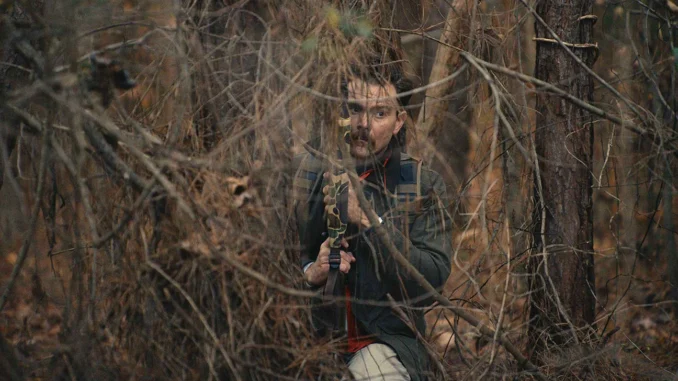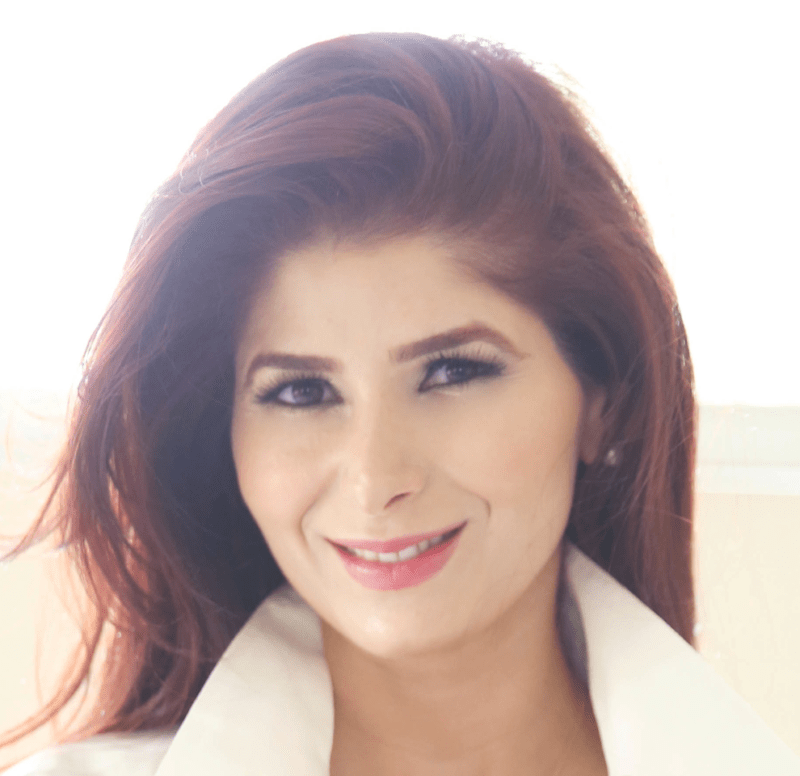
By Patrick Z. McGavin
“My students tell me they want to write or direct, and [ask] why do they have to learn about editing,” said Yvette M. Amirian, ACE. “I always say how necessary and valuable it is for them to understand the power of what we do.”
A Los Angeles native who studied film at USC, Amirian has a highly versatile professional background working in documentary, television and narrative features.
Her new film, “The Integrity of Joseph Chambers,” written and directed by Robert Machoian, explores the tragic repercussions of a lone man (Clayne Crawford) going on an unsupervised hunting expedition in the Appalachian woods.
CineMontage: Would you describe your working methods as like those of a painter or a sculptor?
Yvette M. Amirian: I’ve never been asked that before. The work is very singular compared to some of those other crafts. I guess sculpting would be the closest comparison that I could make because it’s very much building something out of nothing.
My background before working in features was in documentaries. That was very much the case. It’s very much like putting puzzle pieces together. So I think that would be the best comparison. I guess painting would also be something comparable, but mostly sculpting mostly because you’re doing it with your hands, as it were.
CineMontage: The filmmaker Robert Machoian was his own editor on his previous film, “The Killing of Two Lovers” (2020). Did he seek out a more professional voice here?
Amirian: My understanding is that their budget was smaller on that film, and it was a little bit of an all hands on deck kind of situation. The new film was a bit of a step up, both in terms of budget and being able to bring more people on board. Anybody who’s an editor or especially directors who have edited their own projects will tell you that there are benefits when you’re a first-time writer and director.

When you’re doing it yourself, it’s really easy to execute your ideas. I think for anybody who’s had the experience of cutting it themselves versus cutting it with a professional editor, the responses that I’ve gotten not just from him, but other directors in that position, has been that it was a relief because you don’t have to do it entirely on your own.
CineMontage: How would you characterize your creative relationship?
Amirian: Robert has a very specific vision, and you can tell that in the way that he shoots, but he also gives you a lot of options. We had a lot of discussions about the tone, the pace, and what he wanted it to look and feel like. On that first assembly, he told me, “I want to see what you come up with.”
I have to say I enjoy the solitary nature of what we do. The collaboration is the best part, and the most fun. I really enjoy that early process of just being alone with the dailies and figure out what my sort of perspective or vision is, knowing that eventually somebody else is going to come in and take over. Ultimately it’s their film, and it has to be what they want.
I think he really valued the perspective that I brought to it and wanted to have those fresh eyes. It was a unique experience in that we were at the tail end of the pandemic, and we were cutting it remotely at one point. We spent a lot of time together: phone calls, text messages, Zoom meetings. Eventually we were together, especially when we were doing the finishing work, ADR, the color, and the sound.
CineMontage: The film meditates on the theme of damaged masculinity. As a woman, how conscious were you of exploring the psychological implications of that?
Amirian: I don’t know if Robert was looking for when he hired me, but obviously anybody who has seen his other films, they often touch on the theme of toxic masculinity.
For me, what was interesting was looking at it from the perspective of the Tess character, the wife played by Jordana Brewster. I’m married, and I think there’s a little bit of that that I bring to it, of what she is thinking about. As a result, you wonder what he is as a character thinking about. I brought that compassion, that empathy. With this story, I think that you’re thinking about the people that you’ve left behind, your wife, your family, and how they’re going to deal with the fallout of this.
CineMontage: The film opens with two crucial moments between the lead character with his wife, and best friend. How did you want to differentiate the movement and cutting there?
Amirian: That is something we talked about a lot, because we knew the bulk of the movie was this solitary character wandering around the woods. We always looked at the film as having these three very distinct pieces. We wanted to make sure to distinguish the first act, so to speak,
With the first part, we wanted a more normal kind of pace, with the proper two percent coverage, and things like that. As he starts to go on his own into the woods, you want to make it feel like he’s in his head. In that first part, you didn’t want to immediately feel like something was going to go wrong. We wanted you to start to get that feeling once he got there.
CineMontage: The film features close to an hour of screen time with just the one character in the wilderness. How did that impact your choices?
Amirian: Sound obviously plays a really crucial role. Some of that was discussed while we were cutting, and some were things that sound designer Peter Albrechtsen and composer William Ryan Fritch brought. Fortunately we had a chance to see what the sound design and those elements would do to the cutting of the film, and how we were going to pace it.
It was a really interesting experience for me. In some of those sequences, Robert shoots pretty wide, or we have more of traditional coverage. There were some cases where we have the traditional coverage, and we decided to go with those longer takes. I feel like there’s something about that that can feel almost deceptively simple, but it’s actually harder because every time you make that cut, you don’t know that it’s coming, and it can be very jarring. I think that works to our benefit in some cases. This is a thriller, and you want the audience to be taken aback.
CineMontage: The soundtrack is very much tethered to the image.
Amirian: In the early sequences, with the wife and the friend and with him driving out to the woods, it sounds pretty standard, what we had offline. Nothing that really made you go, “Something is going to happen.” It’s really when we got to that section where he’s in the woods where you started to feel like something was going awry.
If you’ve seen any of Robert’s other work, sound is a really big part of what he does, so that is something he is thinking about even as he is writing the script. I knew that he wanted to do something really unique with it. I didn’t know how far he was going to take it. Peter Albrechtsen, the sound designer, had a very short period of time where he was able to come on, so I think we soft-locked and kicked it over to him.
It was much more heavy handed intentionally because we wanted to be able to pull back and then we took that into the offline, made whatever changes that we wanted to make now that we had this sort of intense soundtrack to work with and know how far we were going to potentially push it. “This is feeling too long,” or “This is feeling too short.” We went back and forth like that a couple of times, until we got to the final mix.
CineMontage: How has working in documentary influenced your technique and approach to cutting and shaping performance?
Amirian: I think documentaries are really challenging because you don’t have a script. So much is you mining through the material, and figuring out not just the order, but the pace, or asking what am I missing, and what kind of interview do I need, or what kind of archival would go here. It really informs very well the ability to manufacture performance. It’s truly very similar. It’s just a different set of skills and different kinds of muscle that you’re practicing.
I can’t tell you how many times I’ve been in a situation on a narrative project where something isn’t quite working the way the director had intended. It’s just a matter of taking a step back or telling them, “Give me a few days with this,” and then you go in and try to manufacture the scene, the performance, the sequence. As the editor, you say these are the pieces I have to work with. This is a story that I’m trying to tell, and how do I do that. You always figure it out, and come up with a solution.
CineMontage: Every editor has their own origin story. What is yours?
Amirian: Growing up and watching TV, movies or music videos, I always wondered how they put those pieces together. In 8th grade, I put together this memory video for our graduating class that was literally taking the camera around the school and did the VHS-to-VHS editing, trying to put soundtracks together, on my own.
My high school had a media program, and we experimented with journalism, writing scripts and all sorts of things. That opened my mind to what everything actually was. I learned how to work on and cut on a number of different platforms. AVID was one of them. I taught myself by reading the manual.
I went to film school at USC, and I experimented with a lot of different things. I wrote, I directed, I did production and costume design. I even considered going to law school and doing entertainment law. No matter what I did, I just kept coming back to editing.
I understood the power of it from a very young age. I loved being in that position. I loved helping the director execute their vision. I love being able to craft the story. Every time I have tried to deviate from it in any way, I just come back to it. I guess being an editor is meant for me.
Patrick Z. McGavin is a Chicago-based cultural journalist and writer. He maintains the film website Shadows and Dreams (www.patrickzmcgavin.substack.com).


